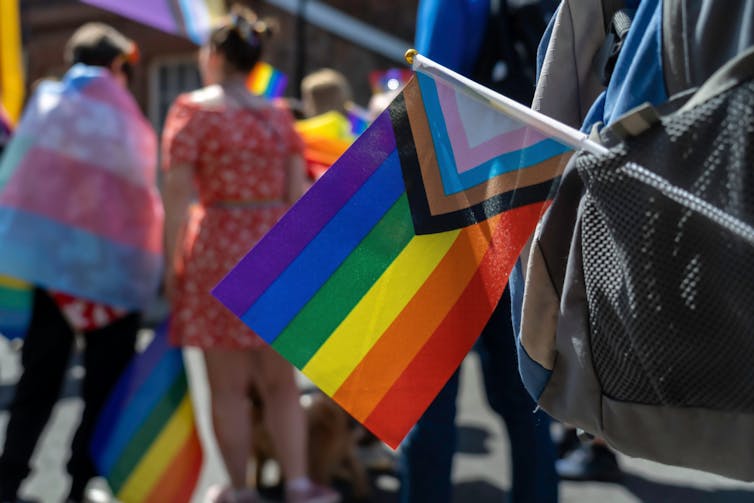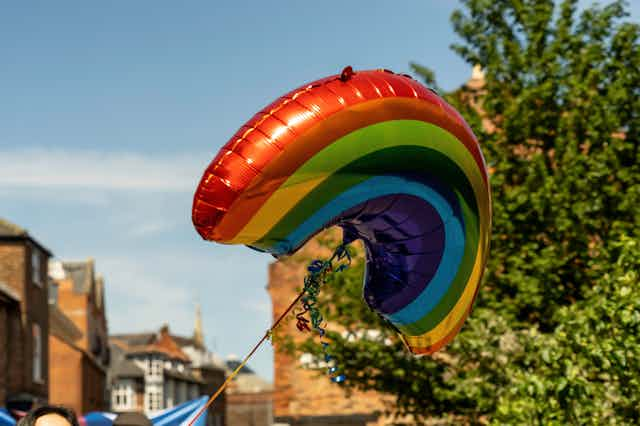LGBTQ+ people in the UK face significant barriers to accessing substance use services, due to a number of factors, including fear of discrimination and stigma. Our research has shed light on these barriers and offers ideas for better helping this community.
We asked 38 LGBTQ+ people about their experiences of using alcohol and other drugs, getting treatment and how they think support and treatment services could improve.
Some LGBTQ+ people face challenges like rejection, stigma and abuse that can negatively impact their self-esteem. Lacking other social outlets, commercial venues like pubs and clubs may become their only connection to community, potentially leading to substance use.
Participants noted challenges such as the normalisation of drinking and clubbing culture within the community. As one explained: “Being part of the LGBTQ+ community can, for some people, be stressful in itself. The club scene in some areas is very drug/alcohol fuelled and focused”.
Another participant also pointed out: “Historically I think recreational drugs have been associated with the queer community, especially among men, this could lead to people thinking that since ‘everyone takes drugs’ they should too”.
Many respondents did not access support services because they feared stigma, discrimination and barriers to treatment. Some also doubted the effectiveness of treatment services or had negative experiences seeking help in the past.
One participant told us: “I didn’t think I would get any help if I sought it because I didn’t get help for other things when I sought and needed it, and because I wasn’t as bad as some other people”.
An important aspect of this research was to listen to the voices of those with lived and living experience of substance use and engagement with drug treatment services. In doing so we identified five suggestions for improving LGBTQ+ engagement:
1. Training
Training staff on LGBTQ+ identities, experiences and needs could help to ensure that treatment services are more welcoming and sensitive. This may reduce fears of stigma or discrimination that deter LGBTQ+ people from accessing support.
2. Recruitment
Feeling uncomfortable talking about sex or gender identity was cited as something which prevented people from accessing services.
For example, one participant explained the difficulty of talking to heterosexual professionals about chemsex, which is the use of drugs before or during planned sexual activity to enhance, disinhibit or facilitate the experience. Chemsex typically takes place at parties or gatherings organised specifically for this purpose.
Treatment providers need to understand LGBTQ+ culture to help people to feel more comfortable discussing intimate issues like chemsex, which many heterosexual or straight professionals may be less familiar with.
Employing LGBTQ+ staff members from diverse backgrounds could also help make services feel more inclusive and supportive.
3. Cultural competence
While some people valued existing inclusive services, more than half of participants said they still faced barriers when trying to access them. Many of our participants suggested that having tailored LGBTQ+ services would be helpful.
But it would also help if existing treatment providers learned more about LGBTQ+ cultures. This is called “cultural competence”, which means being aware of your own cultural beliefs and values, and how they may differ from those of people from other cultures. It also means being open to learning about different cultures so you can understand and meet the needs of the community.
Group services designed for and by LGBTQ+ people could reduce the risk of feeling marginalised in mixed groups. An LGBTQ+ culturally competent provider would be educated about LGBTQ+ experiences, mindful of their own potential biases, and able to offer a welcoming space for open discussion without judgement or misunderstanding.
4. Outreach
Attending Pride events and community spaces could help to build trust and make better connections with LGBTQ+ people. This could also make services more visible, approachable and accessible to the people who need them.
5. Advertising
Visible signals of LGBTQ+ inclusion was also important to our respondents. Symbols like rainbow flags and explicitly stating “LGBTQ+ welcome” in promotional materials could help to communicate that services affirm LGBTQ+ identities and are safe spaces.
One person told us: “Generally, if they were vocally welcoming of LGBT people, it would maybe lessen any worry”.

We now need to work much harder to understand these complex issues with bigger and more diverse groups of LGBTQ+ participants.
All people deserve affirming, compassionate care for substance use issues. Thoughtfully engaging with LGBTQ+ communities and listening to their perspectives is crucial for providing equitable services. Implementing LGBTQ+ inclusive practices requires commitment but is entirely feasible.
Substance use services willing to learn, adapt and grow can successfully create welcoming environments for LGBTQ+ people. Small steps towards inclusion ultimately enable greater access to support for communities that have felt left out for far too long.

